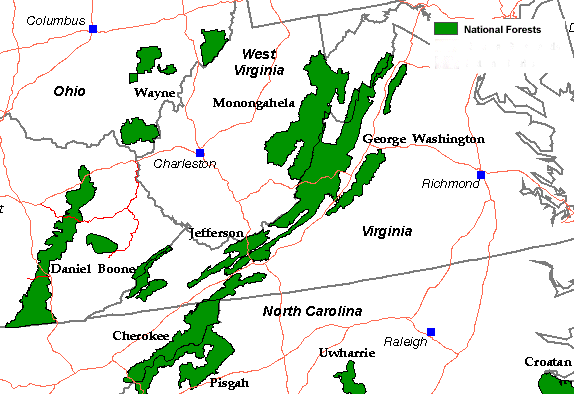
location of National Forests in (and near) Virginia
Source: Forest Service
It's not just an accident that many historic sites in Virginia, such as Colonial Williamsburg, the plantation homes of the Lees and the Byrds, and the original location of Jamestown are managed by non-government organizations. An interest in conserving the heritage of the past is such a part of Virginia culture that it's a common stereotype and the butt of jokes such as:
The mansion houses represent the best living arrangements that educated, "refined" Virginians with wealth and power could create prior to the Civil War. Not surprisingly, they are recognized as special places today. (Personally, I think the current winner of the contest for the "house with most beautiful vista from a front porch" is Montpelier, home of President James Madison and his wife Dolley.)
The first national initiative to preserve a historic site in America was the effort to protect Mount Vernon, home of George Washington. In the 1850's, an era when women were rarely allowed to express political opinions or make business decisions in public, that association provided a rare national platform for women to exert leadership. During the Civil War, the women of the North and the South could not meet in person - but the well-known concerns of the Mount Vernon Ladies Association still helped to establish the site as neutral territory . It was protected, while the men of the North and South were shooting at each other.
Why didn't the historic sites in Virginia end up in government ownership? When the Association for the Preservation of Virginia Antiquities (APVA) - now Preservation Virginia - acquired the original site of Jamestown, the role of government was far more limited than today. There were constitutional concerns that the Federal government in particular was not authorized to manage historical sites purely for cultural preservation purposes.
Congress passed special legislation to authorize the acquisition of forest lands in the eastern states for conservation purposes - not just to grow trees. In that legislation, the purchase of private land was specifically tied to the Federal right in the Constitution to improve navigation.
The national forests are located in the mountains, at the headwaters of Virginia rivers. Federal acquisition of the George Washington and Thomas Jefferson National Forests helped to reduce floods and improved water flow from the mountains to the sea. Such watershed protection would facilitate commerce, and regulation of commerce was a Constitutional reason for spending Federal funds to acquire private land.
Contrast the location of the national forests with the location of the national wildlife refuges. The refuges are on the Coastal Plain, where the waterfowl spend the winter.
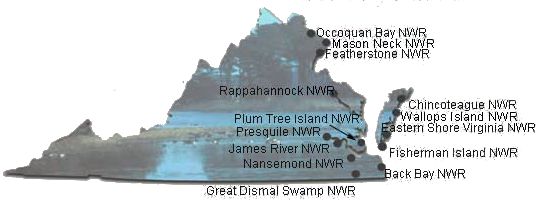 National Wildlife Refuges in Virginia - concentrated in Tidewater Source: US Fish and Wildlife Service |
Managing wildlife that migrates across state and national borders is complex. Private property owners do not "own" the deer, birds, or even salamanders on their property - the states own the wildlife within the state borders. In order to establish a clear constitutional basis for Federal agencies to manage birds that migrate across state lines, the Federal government signed the Migratory Bird Treaty Act with Canada in 1918.
Today, the US Fish and Wildlife Service (FWS) - a Federal agency - establishes a framework of dates within which duck/goose hunting is allowed each season, ensuring hunters in each state get an equivalent hunting opportunity as birds migrate from north to south each Fall.
The Virginia Department of Game and Inland Fisheries (DGIF), a state agency, manages wildlife populations, issues hunting and fishing licenses, and enforces the wildlife laws - including the requirement that migratory bird hunters purchase a Federal "Duck Stamp" to paste on hunting licenses. Revenues from the sale of Federal Migratory Bird Hunting and Conservation Stamps is used to acquire wildlife habitat, so hunters help fund the protection of many species in addition to the ducks/geese they hunt.
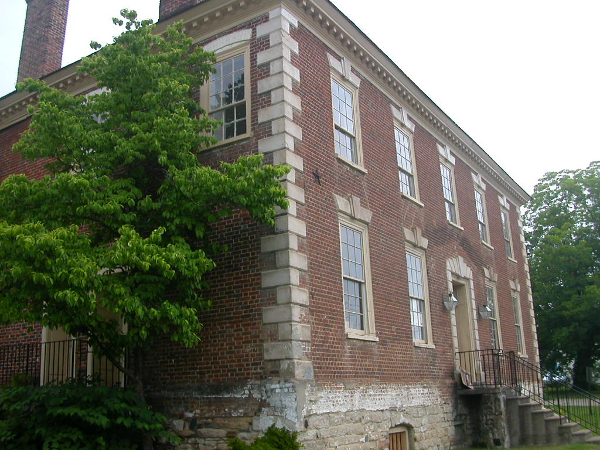
Historic preservation has also involved multiple players. Initially, instead of agitating for new legislation or seeking Federal grants, wealthy Virginians and others acquired and restored old mansion houses to memorialize the "good ol' days." The initial focus was on individual sites associated with the famous politicians such as the eight Virginia presidents, or famous generals such as Lee and Jackson. The APVA also protected a few individual homes such as the Adam Thoroughgood house in Virginia Beach and Bacon's Castle in Surry County, and it took decades for scholars to determine the actual age and significance of some facilities.
In two special locations, more than just individual buildings were protected. The APVA acquired most of Jamestown Island, even though it was believed that the site of the original fort had been washed away by the James River. John D. Rockefeller, at the urging of the local minister in Williamsburg, acquired much of colonial Williamsburg and restored it. At both locations, the sense of history took priority over attracting tourists. The state of Virginia built a re-creation of Jamestown a few miles upstream, while the National Park Service eventually acquired the Yorktown battlefield and constructed a parkway uniting the historic sites, so coordinating the tourist-related activities on the Peninsula is clearly a partnership effort.
The Mount Vernon Ladies Association still owns and manages the main house and a small percentage of the original 5 farms around Mount Vernon. At one time, the deeds of white men were celebrated and most others were ignored in the on-site interpretation. Today, the management of the site reflects the shift in public values. The role of George Washington in America has not been reduced, but the role of the women and slaves on the plantation are also presented. The slave cemetery was identified and visitors are invited to see the site now.
The interpretation of Mount Vernon during the Bicentennial celebration reflected the values in 1976-83, and the interpretation of Mount Vernon at the start of a new century shows a shift in what modern visitors consider interesting and what they value. The Association for the Preservation of Virginia Antiquities preserved sites associated with white men initially, but today it is supporting the excavations at Jamestown that are revealing conflicts and perhaps even murder in the early days of the colony.
Prior to World War Two, Congress imposed restrictions immigration and key senators advocated isolating American from Europe and Asia as a fundamental approach to foreign policy. The focus of historic preservation efforts reflected a concern that the Anglo-Saxon heritage of the United States be highlighted. Preserving the plantation mansions in Tidewater Virginia (and Smithfield Plantation in Blacksburg) and the homes of the eight Virginia presidents drew substantial attention then.
The first Civil War battlefields to be protected officially were all sites of Union victories - Chickamauga and Chattanooga, Gettysburg, Shiloh, and Antietam. In 1911 and in 1913, Manassas and Gettysburg hosted 50th anniversary reconciliations where veterans of both sides honored each other and made clear that the divisions of the past were... of the past.
During the 1930's a different Federal agency took over management of the historic battlefields from the military. The National Park Service supported preservation of the Civil War battlefields where Confederates had been victorious, as well as the sites of Union victories. When Manassas National Battlefield Park was established in 1940, war in Europe was a serious concern. The desire to establish American unity before a potential war in Europe (and ultimately with Japan...) outweighed any lingering resentment over honoring Southern "rebels."
What we choose to protect tells us as much about the present as the past. The initial interest in government protection of Civil War battlefields occurred in the 1890's. That's when the generation of Civil War veterans were nearing the end of their life span, and wanted to ensure they would not be forgotten. A similar population pattern is affecting the development of World War II memorials now. The D-Day Memorial in Bedford County was dedicated in June, 2001, just a few months after the USS Wisconsin battleship was added to the Nauticus museum in Norfolk harbor. The "greatest generation" that fought in World War II is passing from the scene, and the new monuments reflect their current concerns - and political/financial clout - as well as what they accomplished in the 1940's.
Today, when there's much greater emphasis on cultural diversity, you will find costumed interpreters in Williamsburg and Jamestown who present the point of view of Native Americans, slaves, small shopkeepers, women, and others who had minimal power compared to John Rolfe, John Smith, Robert "King" Carter, Alexander Spotswood, William Byrd II, Thomas Jefferson, George Mason, Patrick Henry, etc.
The Booker T. Washington National Memorial honors a locally-born slave who became a nationally-famous educator. Local residents in Franklin County were slow to embrace the memorial to a former slave, but in recent years it has been able to attract more volunteers - especially as new residents have moved into retirement homes at nearby Smith Mountain Lake.
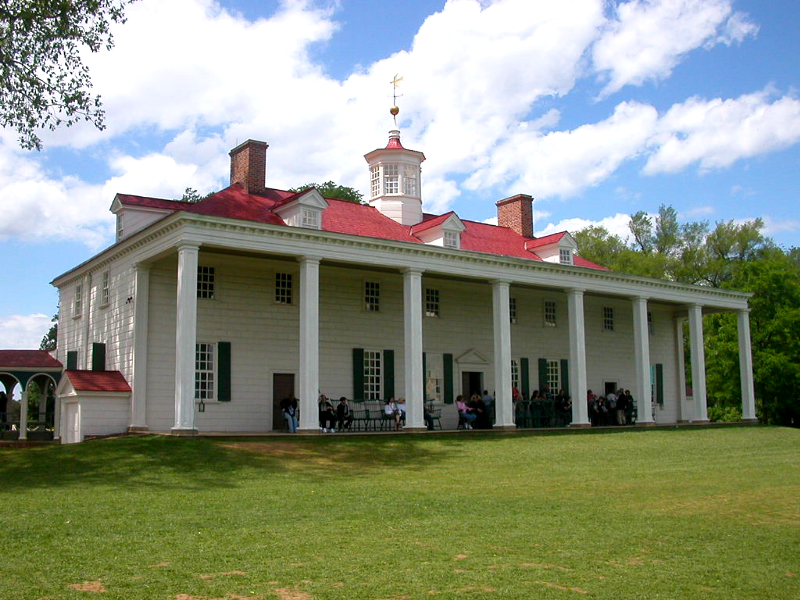
Virginia is actually the birthplace of more than eight Presidents of the United States. If you memorized those presidents in elementary school, you may remember that the first was George Washington and the last was Woodrow Wilson.
What you may not have learned is that Stephen Austin, President of the Republic of Texas before it was annexed to the United States in 1846, was born in Virginia too. His father was responsible for a lead mining operation community in Wythe County on the New River - named Austinville.
Also missing from the elementary school list: Joseph Jenkins Roberts. In 1847, he became the first president of Liberia when it became an independent nation. He had been born in Norfolk, but spent most of his time in Petersburg. There's a small monument there with the inscription "Joseph Jenkins Roberts, resident of Petersburg 1809-1829, President of Liberia 1847-1851, 1868-1876."1
There's even an effort underway to establish a museum of American slavery, once led by former governor Douglas Wilder. His initial proposal was to locate it near Jamestown, where the first slaves from Africa were brought to Virginia in 1619. When the arrangements for land there collapsed, Wilder triggered a bidding war between Richmond and Fredericksburg.
Both proffered land and infrastructure (roads, utilities, etc.) to attract a museum that would address the most painful social mistake in the country's history. The museum in Fredericksburg declared bankruptcy in 2011 without ever constructing a building on the site, but modern tourists are willing to explore a wide range of Virginia's cultural experiences, and to visit places that commemorate more than just the gentry of Virginia.
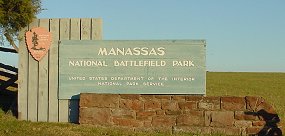 Back in 1925, the War Department identified that there were 3,400 encounters, skirmishes, and battles in the United States. There were 10,455 "military actions" in just the Civil War. They were not evenly distributed across the state - the armies fought in different places between 1861-65, but there were few engagements in southwestern Virginia. Obviously, most locations of military actions have not been set aside as special places.2
Back in 1925, the War Department identified that there were 3,400 encounters, skirmishes, and battles in the United States. There were 10,455 "military actions" in just the Civil War. They were not evenly distributed across the state - the armies fought in different places between 1861-65, but there were few engagements in southwestern Virginia. Obviously, most locations of military actions have not been set aside as special places.2
Preservation of every location associated with the Civil War could block progress throughout much of Eastern Virginia, and not all tourist-oriented initiatives are welcomed by everyone. Manassas Battlefield was the site of major battles in the Civil War in 1861 and 1862, but the "Third Battle of Manassas" to preserve the historic setting has occurred several times. A theme park for Marriott near the Confederate headquarters during Second Manassas was blocked, and then a proposed shopping mall at Stuarts Hill was defeated when the US Congress purchased the land over the opposition of county officials.
In 2003, state and local officials were excited when a new theme park, Disney America, was proposed in Prince William County. Interest in Civil War battlefields surged in the 1990's after a documentary on public television by Ken Burns attracted a huge audience. However, local residents were able to mobilize nationally-famous historians and stopped development of the Disney America theme park.